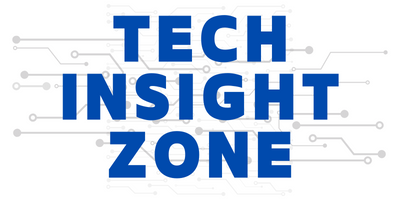The realm of AI-powered video creation is witnessing a fierce battle after OpenAI launched its new text-to-AI video model Sora. Enthusiasts are comparing this new model with RunwayML Gen 2.
Both models boast the ability to conjure up stunning visuals from mere text descriptions, but in the recent social media storm, Sora emerged as the clear champion.
Let’s see some examples, dig deeper into the factors that propelled it to victory, and explore the future of this fascinating technological arms race.
OpenAI’s Sora Vs Runway ML Gen 2: Sora Wins Clearly
Example 1: Pirate Ships Battling
Prompt: Photorealistic closeup video of two pirate ships battling each other as they sail inside a cup of coffee
(Video Credit: Twitter/@doganuraldesign)
In that video, Sora did better, because it presented two pirate ships inside a cup of coffee. On the other hand, Runway Gen2 could not even understand the prompt, it took the ships into the sea, which was not mentioned in the prompt! So, Sora wins here!
Example 2: A Chinese New Year celebration
Prompt: A Chinese Lunar New Year celebration video with Chinese Dragon
(Video Credit: Twitter/@doganuraldesign)
In that video, the prompt was to present a celebration! But Runway Gen2’s video seems generic and it does not show the festive vibe. On the other hand, Sora tried to keep up the festive vibe while presenting the crowd more naturally! So, Sora won again!
Example 3: Reflections in the Train Window
Prompt: Reflections in the window of a train traveling through the Tokyo suburbs
(Video Credit: Twitter/@doganuraldesign)
In that video, we asked for reflections in the window of a running train, not a standby train. Runway ML Gen2 did not understand the prompt and delivered such an output. Whereas, OpenAI Sora did quite well, in this case, as it understood such a complex prompt and generated a nearly perfect video.
I think anyone after seeing the examples, anyone can tell that Sora is better.
But let’s delve deeper to understand why Sora is generating such excitement. Here are some key areas where it shines:
The Difference Between Runway ML Gen 2 and Sora
1. Unmatched Realism:
Sora produces videos with astonishing detail and consistency. Gone are the days of blurry figures and unrealistic movements. Textures, lighting, and even subtle human expressions are rendered with remarkable accuracy, creating an immersive and believable experience. Gen 2, while impressive, still struggles with achieving true photorealism, often resulting in a slightly artificial look.
2. Unbridled Creativity:
Sora’s ability to handle complex scenes and diverse emotions sets it apart. Imagine a bustling city street teeming with life, or a dramatic chase sequence with realistic camera movements. Sora tackles these challenges with ease, while Gen 2 tends to struggle with intricate details and complex interactions.
3. The Power of Customization:
Sora offers extensive control over the generated video. Users can fine-tune styles, adjust camera angles, and even incorporate specific objects or characters. This level of customization empowers creators to bring their unique vision to life, something Gen 2 currently lacks.
4. Simulating the Unseen:
Remember the “weakness” demos you mentioned? Those surreal, dreamlike videos showcase Sora’s ability to simulate not just the physical world, but also human emotions, reactions, and even abstract concepts. This opens up a whole new realm of possibilities for artistic expression and storytelling, something Gen 2 has yet to explore.
However, this AI battle has just begun and there is some more to see.
Beyond the AI Hype: Ethical Considerations Raise
The advancements in text-to-video technology are remarkable, but they come with ethical considerations. Concerns regarding potential misuse in areas like AI-generated propaganda, misinformation campaigns, and even deepfakes require careful attention.
Open and transparent discussions about responsible development and ethical implementation are crucial.
Looking ahead, the future of text-to-video technology holds immense potential. We can expect further advancements in realism, scene complexity, and even the ability to capture human emotions and nuances.
These models could revolutionize the film, animation, and gaming industries, offering creators unprecedented tools and possibilities. However, it’s vital to remember that with great power comes great responsibility.
Addressing ethical concerns and fostering responsible development will be key to ensuring that this technology serves humanity for good.
The Final Verdict: Sora Vs Runway
While both Sora and Gen 2 represent significant leaps in text-to-video technology, Sora’s superior realism, complex scene creation, and captivating “weakness” demos have propelled it to the forefront.
However, the battle is far from over. As these models continue to evolve, the lines between reality and AI-generated creations will continue to blur, pushing the boundaries of creativity and prompting crucial conversations about ethics and responsible development.
Furthermore, intrigued by OpenAI’s advancements? Dive deeper into their latest innovation with the Self-Serve Fine-Tuning API for GPT-3.5.
Discover how this cutting-edge technology empowers developers to refine AI models seamlessly, unlocking endless possibilities in the realm of artificial intelligence.




